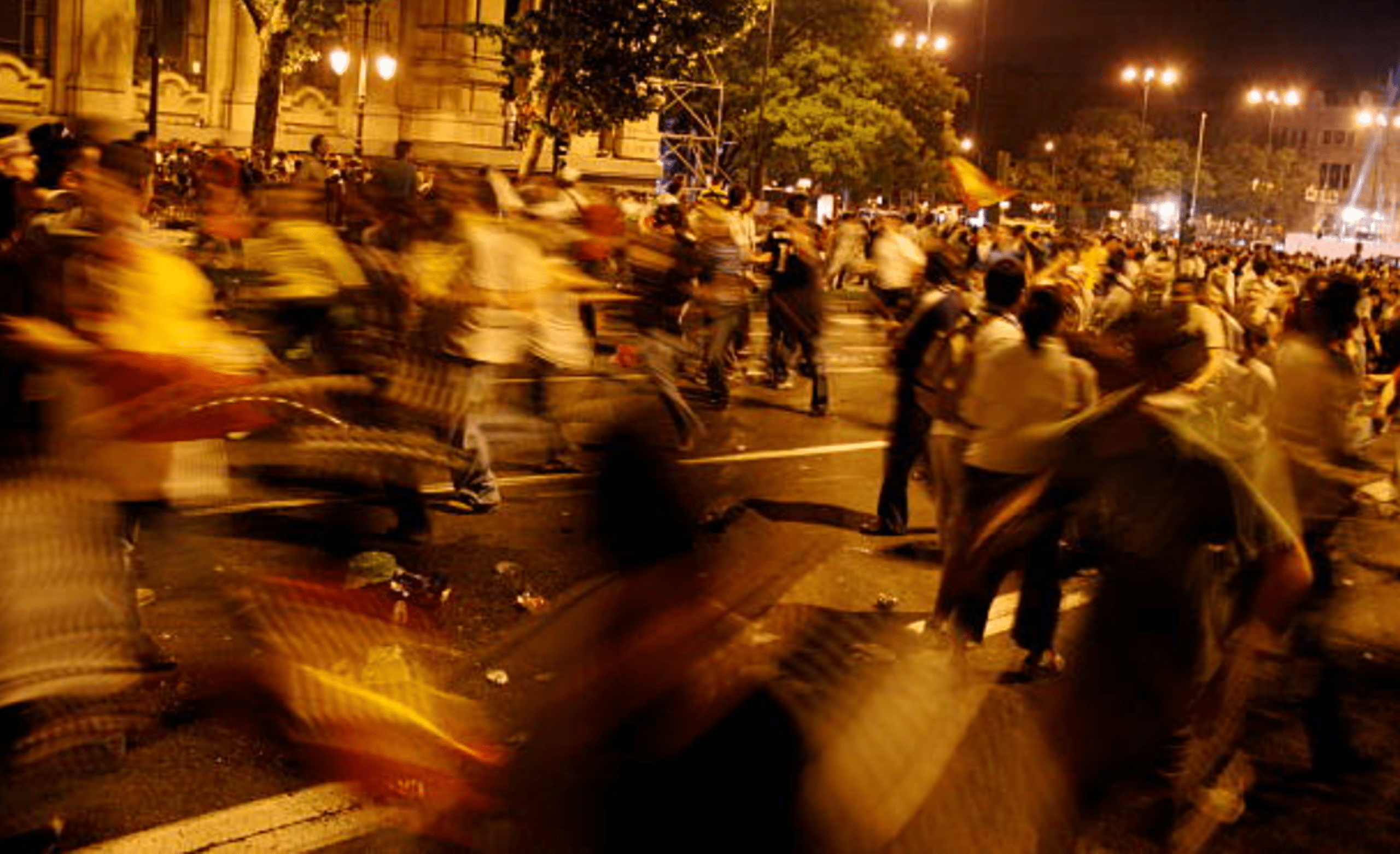
How To Survive A Mob Attack
Understanding how to survive a mob attack is crucial for your safety. Imagine walking down a bustling street when suddenly, a throng of people erupts into chaos. The atmosphere shifts, adrenaline surges, and panic sets in. You might wonder: how do I navigate this situation?
In moments like these, being prepared can make all the difference between becoming just another statistic or emerging unscathed. Mob attacks or (riots) can happen unexpectedly and often escalate quickly. They stem from various causes—protests gone awry, spontaneous gatherings fueled by anger or fear—and knowing what to do when faced with such circumstances is essential.
This guide will arm you with insights on recognizing warning signs and practical strategies to help you stay safe should you ever find yourself caught in the storm of a mob attack. Let’s dive into the vital steps that could keep you out of harm’s way during an overwhelming event like this!
Understanding Mob Mentality
Mob mentality often transforms individuals into a collective force. In the heat of the moment, rational thought can take a backseat to emotion and group dynamics. People may feel empowered by anonymity in a crowd. This protective cloak can lead them to act in ways they typically wouldn’t consider alone.
Fear, anger, or excitement fuels this behavior, creating an explosive atmosphere. The desire for belonging also plays a significant role. When surrounded by like-minded individuals, people may adopt the prevailing attitude without questioning it.
Understanding these psychological triggers is key to recognizing when things might spiral out of control. Awareness allows you to identify potential dangers before they escalate into chaos. It’s essential to stay grounded and maintain your sense of self amidst the noise and confusion that accompanies mob situations.
Recognizing Warning Signs and Staying Alert
Being aware of your surroundings is crucial. Pay attention to changes in the atmosphere. If a crowd begins to feel tense or agitated, it’s time to be cautious. Look for groups forming without a clear purpose. Large gatherings can shift quickly from peaceful to chaotic.
Watch for aggressive body language—clenched fists or raised voices can signal rising tensions. Listen closely for chatter among individuals nearby. Words like “fight” or “let’s get them” should raise immediate red flags.
Trust your instincts; if something feels off, it probably is. Move away from large crowds when possible and seek routes that keep you out of harm’s way. Staying alert means being proactive, not reactive. Keep your phone handy but avoid distractions like headphones that might isolate you from potential threats around you.
What to Do if You Find Yourself in a Mob Situation
Finding yourself in a mob situation can be disorienting. The first step is to remain calm. Panic can cloud your judgment and make the situation worse. Look for an escape route. Identify where you can safely exit without drawing attention to yourself.
Move slowly, avoiding sudden movements that might provoke others. Stay aware of your surroundings. Keep an eye on group dynamics; watch how people are behaving and reacting. This information may guide your next move.
If confrontation seems inevitable, try to blend into the crowd rather than stand out as a target. Sometimes, following the group’s movement can help you slip away unnoticed. Remember to keep your phone handy but avoid using it if it draws unwanted attention. A discreet call for help or text could save lives when necessary while keeping you under the radar.
Physical and Mental Strategies to Survive a Mob Attack
When faced with a mob attack, staying calm is crucial. Take deep breaths to steady your mind and body. Clear thinking can be your best defense. Physical awareness plays a significant role. Keep an eye on the crowd’s movements and identify potential escape routes.
If you see danger approaching, don’t hesitate to move quickly but cautiously away from the chaos. Avoid confrontation if possible. Engaging aggressively may escalate the situation further. Instead, maintain a low profile and blend in with bystanders when feasible.
Mentally prepare yourself for unpredictability. Visualize scenarios where you remain safe and composed amidst turmoil. This mental rehearsal strengthens your confidence during real-life encounters. Trust your instincts; they often guide you better than any plan can in high-stress situations. Prioritize personal safety above all else as circumstances unfold around you.
Seeking Legal Help and Support Systems
Experiencing a mob attack can leave you feeling vulnerable and confused. Seeking legal help is crucial to navigate the aftermath effectively. Connecting with an attorney who understands your case can provide clarity on your rights.
Document everything related to the incident. Gather evidence, witness accounts, and any police reports. This information will be invaluable for building your case. Support systems should not be overlooked. Reach out to local organizations that specialize in trauma recovery or community safety resources.
They often offer counseling services tailored for individuals affected by violence. Consider joining support groups where you can share experiences with others who’ve faced similar situations. These connections foster healing and resilience as you work through feelings of fear or anxiety triggered by the event.
Remember, you’re not alone in this journey; many people have walked a similar path and found ways to regain their peace of mind.
Coping with Trauma After a Mob Attack
Experiencing a mob attack can leave deep emotional scars. It’s essential to acknowledge the trauma rather than suppress it. Allow yourself to feel, whether it’s fear, anger, or confusion. These emotions are valid.
Talking to someone you trust can be incredibly healing. Sharing your experience lightens the burden and can provide perspective. Seek out friends, family, or support groups who understand what you’ve gone through.
Engaging in self-care is crucial during this time. Simple activities like going for walks, journaling, or practicing mindfulness can help restore a sense of normalcy and comfort. Professional help may also be beneficial.
Therapists specializing in trauma can guide you through your feelings and equip you with coping strategies tailored to your needs. Remember that recovery isn’t linear; some days will feel heavier than others. Patience with yourself is key as you navigate this challenging path toward healing.
Learning from the Experience:
After a mob attack, reflection is crucial. It allows you to understand what happened and how to better prepare for the future. Start by assessing your surroundings regularly. Familiarize yourself with potential escape routes in crowded areas. Awareness can be your best defense.
Consider taking self-defense classes. Not only will they boost your confidence, but they also teach practical skills that might come in handy during emergencies. Stay connected with community resources. Local law enforcement or neighborhood watch programs often offer safety workshops and support networks.
Talk about your experience. Sharing insights with friends or family can create awareness and foster discussions around personal safety strategies that benefit everyone involved. Each step taken enhances not just your protection but also empowers those around you to act wisely when faced with similar threats.
Conclusion
Surviving a mob attack requires awareness, preparedness, and a strong mindset. Understanding the dynamics of mob mentality can help you recognize when things are escalating. Staying alert to warning signs is crucial in avoiding dangerous situations.
If you find yourself amidst chaos, remember to stay calm. Physical strategies such as finding an exit or using your surroundings for cover can be essential. Mentally preparing yourself for the unexpected will aid in maintaining clarity during stressful moments.
After experiencing such trauma, seeking legal advice and support systems is vital for recovery. Connecting with professionals who specialize in these situations can offer guidance and comfort. Coping with the aftermath of a mob attack involves addressing both physical injuries and emotional scars.
Engaging with therapists or support groups can foster healing through shared experiences. Learning from each experience enhances future safety measures. Educating yourself on self-defense strategies and remaining aware of your environment will empower you moving forward.
Taking proactive steps may not eliminate all risks but significantly boosts your chances of staying safe should the unthinkable occur again.



